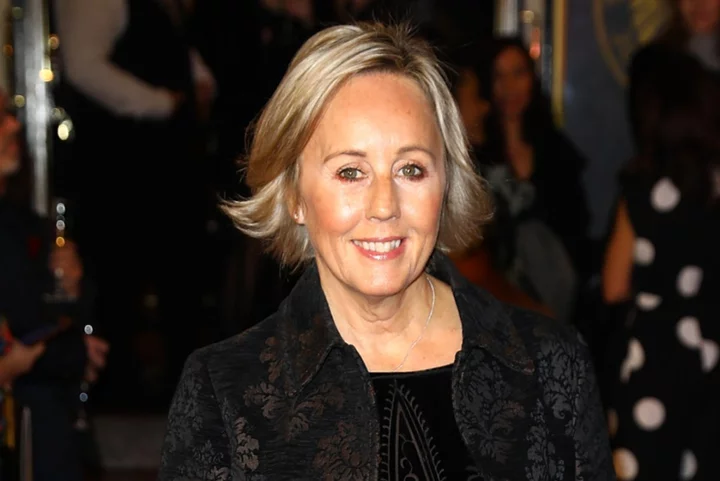
Shirlie Kemp says male doctor told her to ‘get over’ endometriosis
Shirlie Kemp has revealed that a doctor told her to “get over” her endometriosis, despite it making her periods more painful than childbirth. In a new interview, the Pepsi & Shirlie singer, 61, has discussed her experiences with the medical condition, which made her periods so painful she was “bedridden” as a teenager. Endometriosis is a condition where cells similar to those in the uterus are found elsewhere in the body, leading to inflammation, pain and scar tissue. It affects approximately one in 10 women and people assigned female at birth in the UK. “I could have kissed the doctor who said, ‘You sound like you’ve got endometriosis,’” she told The Times. “From 16 I was bedridden when I had a period. I suffered horrendous pain.” Kemp – who is married to Spandau Ballet musician Martin Kemp – continued: “A male doctor said, ‘What a load of nonsense. She’ll get over it,’ and gave me tablets that made me vomit. I didn’t even know there was a private health system until I was in Wham!. “A private female doctor gave my symptoms a name. When I went into labour I thought, this is not as bad as a period.” When a person has endometriosis, the cells similar to those in the womb follow the menstrual cycle, building up and breaking down. However, the blood has no way to escape, with common symptoms including pelvic pain, painful periods, pain during or after sex, pain when urinating, painful bowel movements, fatigue and difficulty getting pregnant. Kemp says that she was told endometriosis could affect her fertility, saying: “My husband wasn’t ready to have a baby. He was a rock star. “When the doctor told me that endometriosis can affect your fertility, I said, ‘Martin, I’ve got to have a baby. I have a problem with my fertility.’” Kemp’s experience with doctors isn’t uncommon. In March, a study by charity Endometriosis UK found that three in four women and those assigned female at birth would not go to a doctor with potential endometriosis symptoms. Among those who are reluctant to see a doctor, 24 per cent said it was because they think painful periods are part of life, and 23 per cent didn’t think it was serious enough to bother a GP with. Read More Britney Spears shares first statement after ‘shock’ Sam Asghari divorce: ‘I couldn’t take the pain anymore’ Kid Rock spotted drinking Bud Light months after shooting up beer cases during transphobic rant From tofu chicken wings to chickpea bacon – how and why you should be making plant-based meat at home The 20 worst kinds of pain humans can experience Chrissy Teigen posts topless photo to remind fans to get mammograms Influencer Caleb Coffee hospitalised after falling off cliff in Hawaii
2023-08-19 19:48

Chrissy Teigen posts topless photo to remind fans to get mammograms
Chrissy Teigen took to Instagram to share a topless photo of herself, but as a health reminder. On Thursday (17 August), Teigen posted a photo of herself laying on an exam room table in a doctor’s office with the caption: “Mammogram/boob ultrasound reminder!” She later explained in the comments that she had completed both an ultrasound and a mammogram in the same day. “When else do you get to see your boob as a one inch steak?!” the caption continued. “Ultrasound also comes with free t***y lotion good for the entire day!!” Teigen’s fans expressed their gratitude for the mammogram reminder, as they shared the importance of having the routine procedure. “Good for you. Early detection is best,” one commenter said. “I read your post as I sit at chemo for stage four breast cancer... I wish so badly that I would have acted earlier.” “Mammo saved my life a year and a half ago! Thanks for reminding everyone,” a second commenter agreed. Even a breast radiologist chimed in, saying: “As a breast radiologist, thank you for this post!” A mammogram is an x-ray picture of the breast used to check for breast cancer in women. A screening mammogram can detect otherwise invisible signs or symptoms of the disease that cannot be felt, while a diagnostic mammogram can be used to check for breast cancer after a lump or another sign of breast cancer has been detected. The American Cancer Society recommends women between the ages 45 to 54 should get a mammogram every year, while those who are above 55 years old can switch to receiving a mammogram every two years. Some women should consider continuing their getting mammograms yearly, depending on their family history with breast cancer. This wasn’t the first time that Teigen, 37, has taken to social media in order to talk about her health. Over the years, the cookbook author has openly discussed her fertility journey with her husband, John Legend. The couple currently share four children together: seven-year-old Luna, five-year-old Miles, five-month-old Esti, and two-month-old Wren, who was born via surrogate. She previously opened up about how different it’s been transitioning from two children to three, after they welcomed daughter Esti in January of this year. “We always joke that Esti is different from Luna and Miles in the way that you really have to do a few extremely specific things with her to get her to calm down or sleep,” Teigen captioned an Instagram video in April of herself, as she held her youngest daughter. “She likes an aggressive rock where your back has to hit the couch repeatedly, a butt pat, a shh shh sound, a bounce between rocks, her body flat against your chest, one arm up and some sort of clothing to grab. I think it’s because I rode a jerky camel uphill for too long when I was pregnant,” Teigen added. After Wren’s birth in June, Teigen took to Instagram to reflect on her and the “All of Me’’ singer’s journey trying to conceive children, following the loss of their son Jack at 20 weeks in 2020. According to Teigen, she didn’t think she could “carry any more babies on [her] own” but still wanted four children for “as long as [she could] remember.” The pair reached out to a surrogacy agency in 2021 with the hopes of “having two tandem surrogates, each to bring us a healthy baby boy or girl,” Teigen recently revealed on Instagram. Early on in their journey, Teigen said she decided to try and get pregnant one more time and began IVF treatments again, which had previously helped them welcome their eldest two children. “We made new embryos. We did my transfer, and were so happy to learn it worked - we were pregnant with our little girl, Esti,” she wrote about her daughter, whom she gave birth to in January of this year. According to Teigen, at the same time, the parents met the “most incredible, loving, compassionate surrogate we could ever imagine.” The couple also decided to show their appreciation for their surrogate, Alexandra, by naming Wren after her. Their youngest son’s full name is Wren Alexander Stephens. Read More Chrissy Teigen reveals her surrogate pumps breast milk for her and John Legend’s baby John Legend and Chrissy Teigen sleep over at Barbie’s Malibu dreamhouse: ‘So jealous’ John Legend and Chrissy Teigan capture daughter saying ‘dada’ for first time in heartwarming video Influencer Caleb Coffee hospitalised after falling off cliff in Hawaii Mediterranean lifestyle helps people live longer, science says Why every parent should know about ‘money muling’
2023-08-19 05:21

Influencer Caleb Coffee hospitalised after falling off cliff in Hawaii
Influencer Caleb Coffee has been hospitalised after falling off a cliff during a hike in Hawaii, according to a GoFundMe page created by his sister. On Thursday 17 August, Coffee’s sister Peyton created the page, where she revealed that her brother is in the intensive care unit with a spinal fracture and broken femur, elbow and wrist. His sister also states that they don’t know the “extent” of his injuries yet, but that they also include “multiple gouges and burns throughout his entire body” According to the GoFundMe, Coffee was hiking with three friends when he “slipped and fell off a 60-80ft cliff onto lava rock”. He was reportedly airlifted to a nearby hospital, with Peyton telling fans that her brother “hasn’t been able to hold down food”. “The medics have informed us more injuries will most likely pop up over the next few weeks…” she added. As of Friday, the GoFundMe has raised $16,000 of its $100,000 goal. Coffee, who has more than 11 million followers on TikTok, updated his followers with a video posted to the platform on Thursday, where he wrote that it’s a “miracle” he’s alive. “Hey everybody, I just want to give a massive thank you to anyone that’s trying to help me or support me right now and I wanted to let you guys know a little update I just found out, that my neck and spine is not broken. Phew,” the TikToker said in the video, which he filmed from his hospital bed. More follows... Read More Schoolboy almost dies from swallowing magnets for TikTok challenge Woman shares honest review of New York City apartment TikTok mom slammed after making 5-year-old son run in 104 degree heat
2023-08-18 22:52
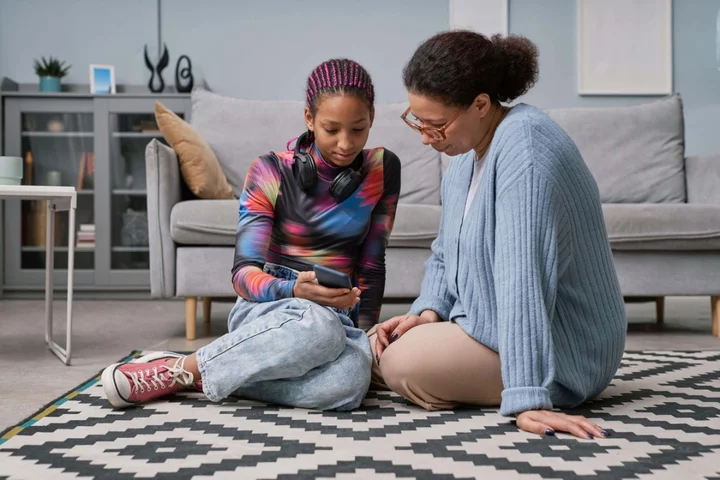
What is money muling and why is it vital parents warn their children about the dangers?
Teenagers often like to have the latest gadgets and trainers, but if a young person suddenly has the ability to splash cash around, with no obvious explanation for their wealth, it could be a warning sign of money muling. Money muling happens when people are persuaded to let cash flow through their bank account in exchange for money or gifts – and young people in particular may be targeted. According to figures released by UK Finance and the fraud prevention body Cifas, young people under the age of 21 account for around one in five cases where money muling activity is suspected. While money muling may be seen as an opportunity to make some easy cash, it’s actually a criminal offence. The cash flowing through bank accounts is often the proceeds from crime. UK Finance and Cifas run a campaign called Don’t Be Fooled, which has developed free PSHE (personal, social, health and economic education) resources for schools, to help young people learn about the dangers and consequences of becoming a money mule. The new schools programme is aimed at youngsters aged 10 to 14. To find out more about the dangers of money muling – and the warning signs for parents to look out for – I asked Paul Maskall, manager of fraud and cybercrime prevention at UK Finance, for his expert insights: How can parents talk to children and teenagers about money mule activity and explain what it is? Paul says: “Even at the best of times, we aren’t always good at valuing and protecting our data, personal information or private details which we store digitally.” He says it’s important for parents to explain what money mules are, “to ensure that the newer generation have a better understanding of how to protect themselves.” He continues: “By doing so, it gives them more of an intuitive defence and understanding of the risk of people wanting to exploit them and gain access to their account, for the purposes of laundering money.” How can young people themselves avoid getting involved in money muling? Maskall stresses the importance of keeping accounts and personal information private. He says: “Criminals seek to manipulate you with a promise of gifts, rewards or a percentage of the funds sent through your account.” People should avoid opening a bank account in their name for someone else, allowing their bank account to be used to send and receive funds for other people, or sharing PINs and passcodes, he says. While criminals will often seek out younger people to become money mules, it’s also important to remember that anyone can be targeted, he adds. What are the warning signs that your child could be involved? “Tell-tale signs that your child might be involved in money muling could be them suddenly having extra cash, buying expensive new clothes or top-of-the-range mobile phones and gadgets with very little explanation as to how they got the money,” Maskall explains. “They may also become more secretive, withdrawn or appear stressed sometimes, becoming more fixated on communication and phone usage.” What are the consequences of money mule activity? Some people may see requests to pass money through their account as harmless – but they could be making a big mistake. “Criminals need money mules to launder the profits of their crimes and frequently target young people, who are often unaware of the consequences of them agreeing to do so,” says Maskall. “Allowing a bank account to be used in this way is a crime and can result in a criminal record and the account being closed. “You could go to prison for up to 14 years and it can also lead to the individual finding it difficult to obtain mobile phone contracts or access financial products and credit, including student loans.” What should parents do if they think their child or someone else they know might be involved in money muling? “It’s important for parents and guardians to remind their children of the potential approaches that they may receive from criminals,” says Maskall. He says if any parents or guardians are worried that someone they are close to might be caught up in money muling, they can contact Crimestoppers anonymously on 0800 555 111. Where can parents go to get support or seek further information and how can communities stay safe? Maskall says: “We encourage everyone to visit the Don’t Be Fooled website for more information on the risk of money muling and how to stop the signs. www.moneymules.co.uk. “It is important to remember that anyone can be at risk and speaking openly and educating one another about the harm and risks involved will benefit others.” Read More From tofu chicken wings to chickpea bacon – how and why you should be making plant-based meat at home Holly Willoughby channels Gwyneth Paltrow with ‘orgasm anxiety’ blog post Do it for the Gram: Speedy but spectacular goat’s cheese linguine Charity boss speaks out over ‘traumatic’ encounter with royal aide Ukraine war’s heaviest fight rages in east - follow live
2023-08-18 20:27
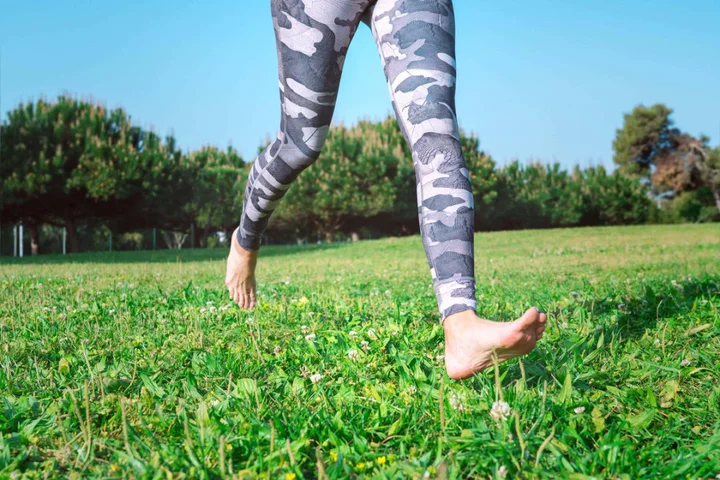
Tempted to try barefoot running? Here’s what you need to know
Barefoot running seems to be rising in popularity, with fans hailing its many benefits – and some even tackling entire marathons without shoes. The thought of bare soles beating the pavement may leave many people wincing, and there are certainly things to consider before giving it a go. But the idea of exploring the most natural way to move – with our primitive bare feet on the ground – could be tempting too. So, what is the deal with barefoot running, and is it worth it? Are there any benefits to barefoot running? “Barefoot running really helps us reconnect with nature,” says Sammy Margo, a physiotherapist working with muscle and joint care specialists Deep Freeze and Deep Heat. For many, this is a big part of the appeal – and some fans of barefoot running say they’ve experienced benefits to their running form too. It’s important to remember our bodies may all respond differently to pressure and force, however, so how we react to barefoot running may vary. “The body, muscles, and joints will take on the ground pressure differently,” says podiatrist Dina Gohil, brand ambassador for CCS Foot Care. “Some people may experience improvement in pain in certain areas, and vice versa. The body works together and force is distributed to the best of your body’s ability to enable the movement you’re trying to achieve.” If you can physically feel your feet hitting the ground however, in theory, your body may become more aware of those forces and movement patterns. “Going shoe-free can help with your awareness of the position and movement of your body – proprioception. Exercising barefoot can also help restore natural running patterns and strides,” Gohil explains. For example, she adds: “Being barefoot can actually allow you to be more conscious of how the heel strikes on the ground, and at what pace and strength. So doing activities barefoot can help strengthen the foot and ankle, improve muscle strength, increase flexibility, and allow for proper movement.” Will you notice other changes? According to barefoot runners, the soles of your feet will also become a lot more resilient over time. “The best way to toughen feet is to try and walk on as many different surfaces as possible. Some people have also used newspapers on the ground to walk on to help with this process,” says Gohil. The muscles in your legs will develop differently too. Margo says: “Running barefoot also activates smaller muscles in our legs and feet, helping to improve strength and overall mobility.” Are there any risks or cons to think about? While many runners experience a range of benefits from going barefoot, there are certainly potential risks to consider. First and foremost, there’s the risk of wounding yourself if you stamp on something sharp – so always be sensible when choosing where to run barefoot. “Until your feet become acclimatised, you may find you are more prone to blisters until firmer skin or calluses have formed,” says Gohil. “There is also the increased risk of developing plantar fasciitis on the sole and heel of the foot. Other problems might include blisters, callus, cuts, infection, Achilles tendonitis, tight lower leg muscles, or stress fractures.” Margo adds: “As our muscles are working harder, [they] may become shorter and tighter, and you may feel some pain initially when you start barefoot running.” Having the support and comfort of a well-fitting running shoe can also be vital for many runners, particularly if you have a history of injuries or joint problems – so it’s advisable to speak with a healthcare professional before you attempt barefoot running. Read More Charity boss speaks out over ‘traumatic’ encounter with royal aide Ukraine war’s heaviest fight rages in east - follow live How can you get rid of acne scars? From serums to laser treatments, experts talk through the options 5 viral TikTok fake tanning tips for the perfect summer glow Not got the A-level grades you needed? Here’s how to get started with the clearing process
2023-08-18 15:59

Omagh bomb: Irish government accused of disrespect over inquiry
An Irish government minister said there was no new evidence to merit a public inquiry in the Republic.
2023-08-18 07:29
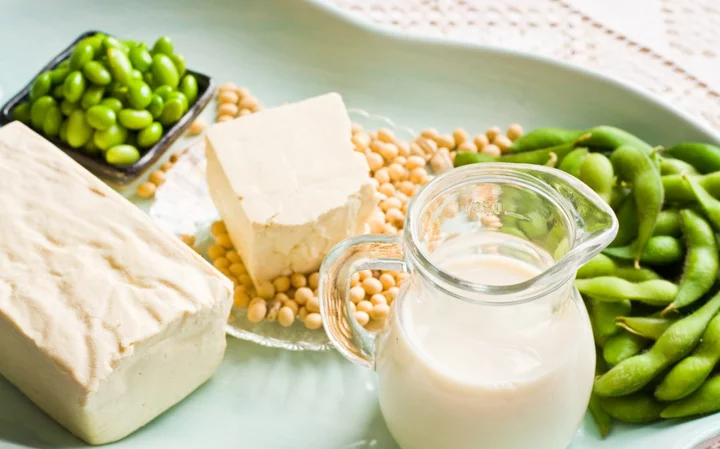
Vegan diet can reduce hot flashes associated with menopause, study suggests
Plant-based diets with a sufficient amount of soy can reduce hot flashes while also aiding weight loss, according to the Women’s Study for the Alleviation of Vasomotor Symptoms (WAVS) trial. A study published by the North American Menopause Society in the journal Menopause found that a diet intervention is about as effective as hormone replacement therapy for reducing menopausal hot flashes, without the associated health risks. “We do not fully understand yet why this combination works but it seems that these three elements are key—avoiding animal products, reducing fat, and adding a serving of soybeans,” explained lead researcher Neal Barnard, MD, president of the Physicians Committee and adjunct professor at the George Washington University School of Medicine. “Our results mirror the diets of places in the world, like pre-Westernized Japan and modern-day Yucatán Peninsula, where a low-fat, plant-based diet including soybeans is more prevalent and where postmenopausal women experience fewer symptoms.” To conduct the study, researchers recruited 84 postmenopausal women that reported episodes of hot flashes two or more times per day. Participants were randomly assigned into two groups. One group was an intervention group that was on a low-fat vegan diet consuming half a cup of cooked soybeans daily, while the other was a control group with no dietary changes for 12 weeks. After 12 weeks, researchers found that those on a vegan diet had a 88 per cent decrease in moderate to severe hot flashes and had lost an average of eight pounds. This is about the same success rate as hormone replacement therapy (HRT), which is usually 70 to 90 per cent effective against hot flashes. The trial was split into two parts, the first being published in 2021 and the second being published this year. It successfully addressed the point that there may be positive changes seen in menopause relief due to seasonal temperature variations. The first trial, which was conducted during the autumn season raised the question of whether this symptomatic improvement might have been attributed to cooler temperatures. But women who began the study as the weather warmed up in the spring had the same benefit, ruling out the effect of the temperature outside. “These new results suggest that a diet change should be considered as a first-line treatment for troublesome vasomotor symptoms, including night sweats and hot flashes,” explains Dr Barnard. Dr Barnard and the team agree said their results not only support putting diet and lifestyle at the forefront of the conversation with hot flash relief during menopause but also for other common complications such as weight gain and chronic disease implications. “This study demonstrates the effectiveness of a dietary intervention for menopausal symptoms,” Dr Barnard said. “As well, it is precisely the diet that would be expected to reduce the health concerns of many women reaching menopause: an increasing risk of heart disease, breast cancer, and memory problems.” The findings are published in the journal Menopause. Read More What are the symptoms of menopause and how can they be relieved? What’s the link between the menopause and anxiety? Menopause affecting your mental health? Experts reveal what to do What I gained (and lost) by walking 10,000 steps each day for 5 months Raven-Symoné details cosmetic surgeries she had before she turned 18 Nearly half of US adults are interested in taking weight loss prescription drugs
2023-08-16 17:27
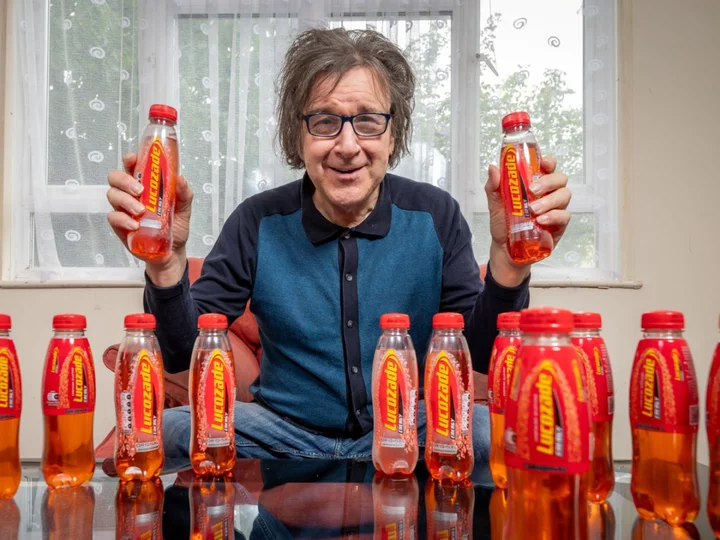
Lucozade addict drinks eight bottles a day and says it’s harder to quit than class-A drugs
A grandfather is addicted to Lucozade despite having three heart attacks, and said it's harder to give up than class-A drugs. Garry Johnson, 65, began drinking coffee aged 12 and loved the caffeine buzz. The now-retired painter and decorator took cocaine and amphetamines in his teens, and after 15 years of on-off drug use went “cold turkey” when his son Sam was born in 1992. Keen to stay energised, he took up drinking 380ml bottle bottles of Lucozade Original, and now gets through eight a day. He's had the habit for 29 YEARS and it currently costs him around £150 a month. And at today's prices, his nearly three decade habit would have cost him more than £42,800. He had three heart attacks between 2012 and 2014 because of a hereditary heart condition, and doctors encouraged him to ditch caffeinated drinks. He gave up dairy and every other form of caffeine - but he still necks more than three litres of Lucozade a day. He said Lucozade is proving harder to give up than class-A drugs - because of the "after effect - like that lovely feeling in your mouth after you eat an expensive bit of chocolate." Garry, from Basildon, Essex, said: "I took cocaine every day but it was a piece of cake to give up - but I'd find it really hard to ever give up Lucozade. "I love it - not just the taste but the affect on my body makes me feel great. If I do go two or three hours without one, I fancy one... God knows how I'd be after two days.” He stopped using cocaine aged 30, when his son Sam, now 31, was born and went cold turkey because being a new dad was "stimulant enough". He started drinking Red Bull but found himself with migraines, and eventually moved onto Lucozade. He initially drank six a day, but has had eight a day for the last seven years. Now he goes to Tesco every day and buys one or two four-packs - depending how many bottles he already has stacked up in the fridge ready to drink. "I've always needed some kind of stimulant and eventually I realised Lucozade is perfect for me," he said. "After my heart attacks they told me to quit the energy drinks but I recently had new heart tests and my results are better than they've ever been. "I guess I've just found one that suits my body." But Garry said he doesn't even want to give up because it's a "part of his identity" - like a person's favourite shirt or their daily breakfast. He justifies the cost because he doesn't drink alcohol or smoke. He said: "£5 a day - that's less than a pint of beer today in some places." If you or someone you know is suffering from alcohol addiction, you can confidentially call the national alcohol helpline Drinkline on 0300 123 1110 or visit the NHS website here for information about the programmes available to you. If you or someone you know is suffering from drug addiction, you can seek confidential help and support 24-7 from Frank, by calling 0300 123 6600, texting 82111, sending an email or visiting their website here. SWNS Read More What I gained (and lost) by walking 10,000 steps each day for 5 months Husband ‘ruins’ dinner because of his wife’s typo: ‘The worst kind of control freak’ John Whaite says he ‘spent time apart’ from fiancé after ‘falling in love’ with Strictly pro
2023-08-14 14:59

Strictly’s Amy Dowden shares pictures of new wig amid chemotherapy treatment for breast cancer
Amy Dowden has shared an update after announcing she has breast cancer. The dancer told fans that she underwent a single mastectomy to treat stage three breast cancer after she was first diagnosed in May. But last month, she was told she needed chemotherapy after further tumours were discovered following the surgery. Since receiving her diagnosis, Dowden, who is best known for working as a professional dancer on BBC’s Strictly Come Dancing since 2017, has been raising awareness of breast cancer and updating her followers throughout her treatment. In her latest update, Dowden shared a series of posts to her Instagram Stories showing her followers the bespoke wig she had made as undergoes chemotherapy. Both Dowden and the owner of Be Unique Wigs by Charlotte shared a screenshot of their messages, as Dowden thanked her for making the wig. Charlotte, the wigmaker, wrote: “I’ve been working on a wig for the beautiful @amy_dowden and just received this lovely message from her! “I love her,” wrote Dowden in the messages, asking if she could order another one. “Thank you so so so very much.” The wigmaker said in an Instagram post that it was an ‘honour” to make the wig for the Strictly professional. “I’m hoping it will give you some comfort in a difficult time, I’ve said many times on here... it’s not just hair!” said the wigmaker. “Losing your hair can make such a difference to your confidence it’s almost like losing part of your identity,” Charlotte added. Last month, in an Instagram Live conversation for the charity CoppaFeel!, Dowden spoke about being told she’d need chemotherapy after more tumours were discovered following her mastectomy. “For me my journey everything changed,” she explained. “I was originally going to have a lumpectomy, radiotherapy and hormone treatment. But then, after my MRI, they found another tumour so then it changed into a mastectomy and then, after my mastectomy, unfortunately, they found even more tumours. “They found another type of cancer and then they told me I needed chemo – for me that was a massive blow,” she continued. “It wasn’t in the plan, originally – and I know the plan you can’t get fixated on.” Dowden also added that would not be able to dance in a competitive capacity on this year’s Strictly. “This year, it means I’m not going to be able to dance with a celebrity on Strictly, but I’m in such regular contact with the team – the BBC have just been utterly incredible,” she said. “The rest of the year looked very different to what was planned but hopefully I’ll enter 2024 cancer free and I’ll never take anything for granted and promise to live life to the full,” she wrote in a post last month. Dowden joined Strictly in 2017, and has competed in every series since, reaching the final in 2019 with kids’ TV presenter Karim Zeroual. Find the full Strictly Come Dancing 2023 lineup here. Read More What I gained (and lost) by walking 10,000 steps each day for 5 months Pink fan who went into labour during concert names newborn son after pop star Woman behind viral ‘not real’ plane tirade says her life has been ‘blown up’ Strictly’s Amy Dowden shares health update following second cancer diagnosis How to sleep during hot weather, according to experts What is rheumatoid arthritis?
2023-08-13 18:17

Adam Thomas diagnosed with long-term health condition ahead of Strictly Come Dancing
Actor Adam Thomas has revealed he has been diagnosed with a long-term health condition just days after being announced as the eighth celebrity contestant who will compete in the forthcoming series of Strictly Come Dancing. Sharing a post to Instagram on Friday (11 August) to celebrate his 35 birthday, the Waterloo Road actor told his followers that he has been diagnosed with rheumatoid arthritis. “As much as I act like a kid, my body is telling another story…” he wrote. “I’ve been in a lot of pain since January,” he continued. “It started with my knees and then travelled to my wrists, fingers and now ankles and toes.” Thomas explained: “I never knew what was happening and finally after several blood tests and back and forth to doctors and hospitals, I’ve been diagnosed with rheumatoid Arthritis!” The actor, who is best known for playing Donte Charles in BBC school-based drama, said that he originally thought arthritis was something that people are diagnosed with “later on in life”. Last week, Thomas was announced as the eighth celebrity contestant to appear on Strictly Come Dancing, but has said that he is “up for the challenge”. “The reason I signed up to Strictly is because I just want to be able to move again, get fit and do it, all with a smile on my face!” he wrote. “It really couldn’t have come at a better time I’m a firm believer of everything happening for a reason, and I know the journey I’ve been on was meant to happen, to never take small things in life for granted! …Like going for a run, playing with my kids and just being able to walk with no pain!” “I know it’s going to be tough and I’ve definitely got my work cut out but am up for the challenge and can not wait to get on that dance floor!!” Thomas, who marked his birthday by sharing a picture with his wife, Caroline Daly and their two children, told his followers to “stay positive” and “get the right help where and when you can”. Rheumatoid arthritis is an autoimmune disease and long-term condition that causes pain, swelling and stiffness in the joints. The condition usually affects the hands, feet and wrists and can cause flare-up periods, where symptoms become worse for a period of time. According to the NHS, the condition often stars when a person is between 30 and 50 years old, and women are more likely to be affected than men. Thomas played Adam Barton in ITV soap Emmerdale and also appeared in I’m a Celebrity... Get Me Out of Here in 2016, and went on to co-host the spin-off I’m a Celebrity: Extra Camp. Speaking in a statement ahead of his Strictly debut, Thomas said he has been a fan of the dance competition “for years”. “I can’t believe I’m actually doing it!” he said. “I can’t dance to save my life but I’m buzzing to learn and have a good laugh with my pro. Get me on that dance floor... I can’t wait!" Former Strictly contestants have been sharing their words of encouragement for Thomas as he embarks on the challenging training schedule. “You’re so strong and with your family behind you, you can conquer anything. Can’t wait to see you smash it on Strictly ,” wrote singer and presenter Fleur East, who competed in last year’s competition. TV presenter Angela Scanlon, who will be competing alongside Thomas this year, wrote: “You’ve got this.” Find the full Strictly Come Dancing 2023 lineup here. Read More Husband ‘ruins’ dinner because of his wife’s typo: ‘The worst kind of control freak’ Fan who went into labour at Pink concert names newborn son after her From Angela Scanlon to Zara McDermott: The fashion of this year’s Strictly contestants Linda Evangelista opens up about co-parenting with son’s stepmother Salma Hayek Katharine McPhee reveals she and David Foster suffered a ‘family tragedy’
2023-08-12 17:55

Katharine McPhee reveals she and husband David Foster suffered a ‘horrible family tragedy’
Katharine McPhee has revealed that she and husband David Foster have suffered a “horrible family tragedy”. The singer, 39, shared a statement to Instagram on 11 August to announce that she’ll be missing the rest of her husband’s tour in Asia, where she’s been performing as a guest, due to a family emergency. Although she didn’t specify what the tragedy was, she wrote that she’ll be heading home to be with her loved ones, while implying that her husband will still be doing the shows this weekend. “Dearest Jakarta fans, it’s with heavy heart I announce I have to miss our final two shows of our Asian run,” she wrote. “David and I have had a horrible tragedy in our family and at least one of us needs to get back home to our family.” She concluded: “Please know how sorry I am and how much I wish to return someday and perform for you all. Love, Katharine.” Many friends and fans of the couple took to the comments of McPhee’s post to send her kind messages amid the family tragedy. “Sending my love and prayers for your family,” Masked Singer judge Nicole Scherzinger wrote, while Linda Thompson added: “Sending you and David love, & hoping that everything is okay.” “Sending you loads of love. I’m thinking of you guys,” Amanda Kloots also wrote. Foster, 73, is still set to play at the Sentul International Convention Centre in Jakarta, Indonesia, on 11 August and 12 August, according to his official website. He will then be on a hiatus from his tour, before returning to the stage on 1 November in Warren, Michigan. The Independent has contacted a representative for McPhee and Foster for comment. Foster and McPhee made their official debut as a couple in 2018, before officially tying the knot the next year. They welcomed their first child, Rennie, in February 2021. Since then, they have continued to post about their son on social media, hinting that he also has a musical side. In June, Foster shared a video on Instagram of Rennie playing the drums, alongside the caption: “PROGRESS!! Two years three months.” During an interview with Entertainment Tonight in October, Foster acknowledged that although his youngest child has developed an interest in drumming, it’s still soon to tell if he’ll become a musician like his parents. “You know when you look at somebody like Andre Agassi and Steffi Graf, their kids are very talented... but they’re not tennis players, so we don’t know,” he said “He’s so young.” McPhee also agreed, adding: “It makes sense that he’d be musical, but we’re not really sure. He’s certainly obsessed with the drums! Or imaginary drums, for that matter.” Read More Katharine McPhee reveals whether she and David Foster want more children David Foster opens up about raising a toddler at age 73 Katharine McPhee defends husband David Foster after backlash over postpartum body comment Gemma Atkinson slams trolls who called her ‘fat’ just three weeks after giving birth Mother diagnosed with cystic fibrosis, anorexia and incurable cancer 7 ways for parents and carers to ease back-to-school worries
2023-08-11 23:49
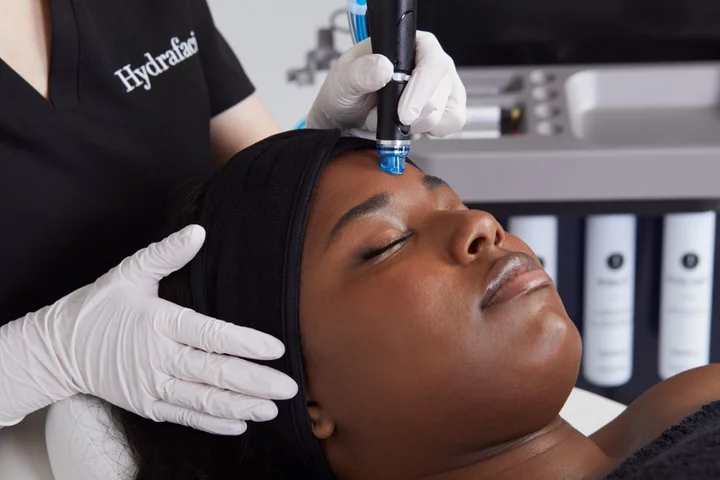
How to pick the best facial according to your age range
If you’re a dedicated skincare junkie, you might be thinking about how you can get that glow beyond your night-time skincare routine. Facials can be an appealing way of targeting any concerns you might have and giving your skin a bit of professional care. But they’re undoubtedly expensive, and generally more of an investment than buying a pot of moisturiser. Naturally, you want to spend your money as wisely as possible – and if you do have the extra funds for a facial, you don’t want to waste it. So, what’s the best type of facial to get for your age group? In your twenties “Facials and skincare choices in your twenties should be preventative; aiming to optimise your skin’s health and supercharging collagen and elastin levels,” says Dr Thuha Jabbar, aesthetic doctor and founder of Almas Dental. “Hydrafacials are a great, non-invasive skin boosting treatment that deep cleanse the skin, brighten and reduce fine lines. Chemical peels and other non-invasive facial treatments are also great to improve skin tone and keep breakouts at bay.” Dr Sophie Shotter is also a fan of Hydrafacials (which start from £125 depending on clinic and location – available in over 1,300 UK and Ireland providers). They provide a deep clean, followed by extracting any impurities then moisturising the skin. Shotter says they can “help to give the skin a deep clean, minimising the risk of breakouts. LED [light therapy facials] is also an excellent choice. Many facialists will combine techniques for best results.” Dr Radmila Lukian, dermatologist at the Lucia Clinic, recommends microdermabrasion for people in their twenties – a process where fine crystals and a vacuum are used to remove dead skin cells. She says it’s “a great treatment for brightening dull skin and reducing pigmentation. Perfect for young adults.” In your thirties When you hit your thirties, this is the time when Shotter recommends “starting to think about upping the ante” with your skincare. She recommends facials which incorporate microneedling – a process where small needles pierce the top layer of your skin. “We often start to notice the early signs of ageing, as collagen loss kicks in through our thirties, and these treatments can help to stimulate collagen production leading to significant improvements in skin texture,” Shotter says. Lukian recommends a facial that incorporates dermaplaning – where a scalpel removes hair and dead layers of skin – which she says can help “combat free radical damage, stimulate collagen and improve skin texture”. In your forties When you reach your 40s, Lukian suggests LED light therapy and laser skin resurfacing treatments, as they “become more relevant to target wrinkles, stimulate collagen and improve skin elasticity”. She adds: “Laser skin resurfacing uses targeted laser energy to promote collagen production – revealing healthier, younger-looking skin.” Kim Kardashian, 42, is a fan of laser facials, and often posts about her treatments on Instagram. Jabbar adds: “Your forties are a great time to try laser treatments, to reduce the visibility of wrinkles and boost the overall health and appearance of your skin. From laser skin resurfacing treatments to IPL [intense pulsed light] facials that reduce hyperpigmentation and sun spots, lasers are a versatile and non-invasive option which can restore a youthful glow to your skin.” In your fifties and beyond “In your fifties and beyond, keeping focused on collagen stimulation with similar approaches to our forties certainly helps a lot,” says Shotter. “But in our fifties, we often start to notice many more visible signs of ageing, including pigmentation and skin wrinkling (elastosis). Using deeper chemical peels or resurfacing laser techniques, which may carry a little downtime, but are worthwhile for the results.” For this age range, she says skin hydration “is also often a higher concern than in younger years”, so hydrating facials are an excellent choice too. While Hydrafacials are great in your twenties, they’re equally beneficial in your fifties and beyond – singer and actor Jennifer Lopez, 54, recently collaborated with the brand for her own ‘JLo Beauty Booster’ that can come as part of the treatment. Read More Charity boss speaks out over ‘traumatic’ encounter with royal aide Ukraine war’s heaviest fight rages in east - follow live What is the TikTok ‘carnivore diet’ trend and is it actually good for you? How to save money on your summer barbecue as prices soar Exercise and yoga can help improve lung function in adults with asthma – study
2023-08-11 16:46
